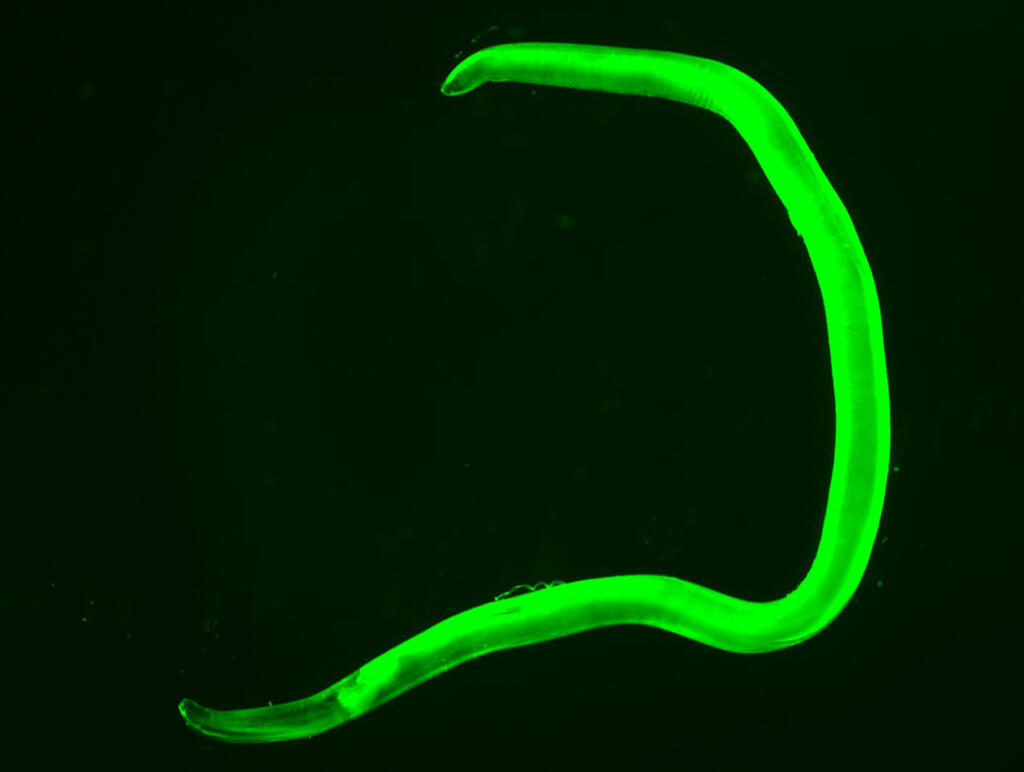
Provided by Osaka University
The nematode C. elegans has an excellent sense of smell, which is believed to be effective in detecting early-stage cancer, and it has already been commercialized. The development of this cancer detection technology was triggered by a research report that showed that Anisakis, a type of nematode, had invaded cancerous tissues. From this, the research group of Professor Shinji Sakai of the Osaka University Graduate School of Engineering Science and graduate student Wildan Mubarok has succeeded in developing a method for coating the surface of nematodes such as Anisakis with a flexible hydrogel film that is approximately 0.01mm thick.
The group wondered if it would be possible to utilize the abilities of the Anisakis in a way that would be useful to humans. In particular, Anisakis' ability to detect the odor of cancer and then move to the cancer's site is attractive as a carrier for substances that kill cancer cells, and they worked to develop a method of carrying such substances. As a result, they developed a method to form a thin film of flexible gel about 0.01 mm thick on the surface of the nematodes in about 20 minutes that does not affect their mobility or their ability to detect odors.
The nematodes were also coated with a thin gel film that incorporates an enzyme (glucose oxidase) capable of generating hydrogen peroxide from glucose in the blood, and, when placed in a culture medium containing cancer cells, were able to kill the cancer cells after 24 hours. The study also showed that it was possible to impart the nematodes with new functions by coating them with thin gel films that have a variety of functions, such as improving their resistance to UV light by coating them with a thin gel film containing a material that blocks the transmission of UV rays.
According to Professor Sakai, "In order for this method to be put into practical use, we need, at the very least, a drug or method that, via oral dosing, can immediately kill the Anisakis that are no longer needed. If this can be done, then it would also be an effective treatment for food poisoning caused by Anisakis. In the future, we would like to work on developing Anisakis suits (the technology to coat the Anisakis with thin gel films) that can kill cancer even more effectively."
■ Anisakis: Nematodes that have a negative image because they cause stomach pain when ingested through mackerel sashimi and other foods. On the other hand, viewed from a different perspective, Anisakis have an interesting feature in that they do not immediately die when exposed to gastric acid. It has also been reported that they may be able to detect the smell of cancer then move to and attach to the cells.
Journal Information
Publication: Materials Today Bio
Title: Nematode Surface Functionalization with Hydrogel Sheaths Tailored In Situ
DOI: 10.1016/j.mtbio.2022.100328
This article has been translated by JST with permission from The Science News Ltd.(https://sci-news.co.jp/). Unauthorized reproduction of the article and photographs is prohibited.




